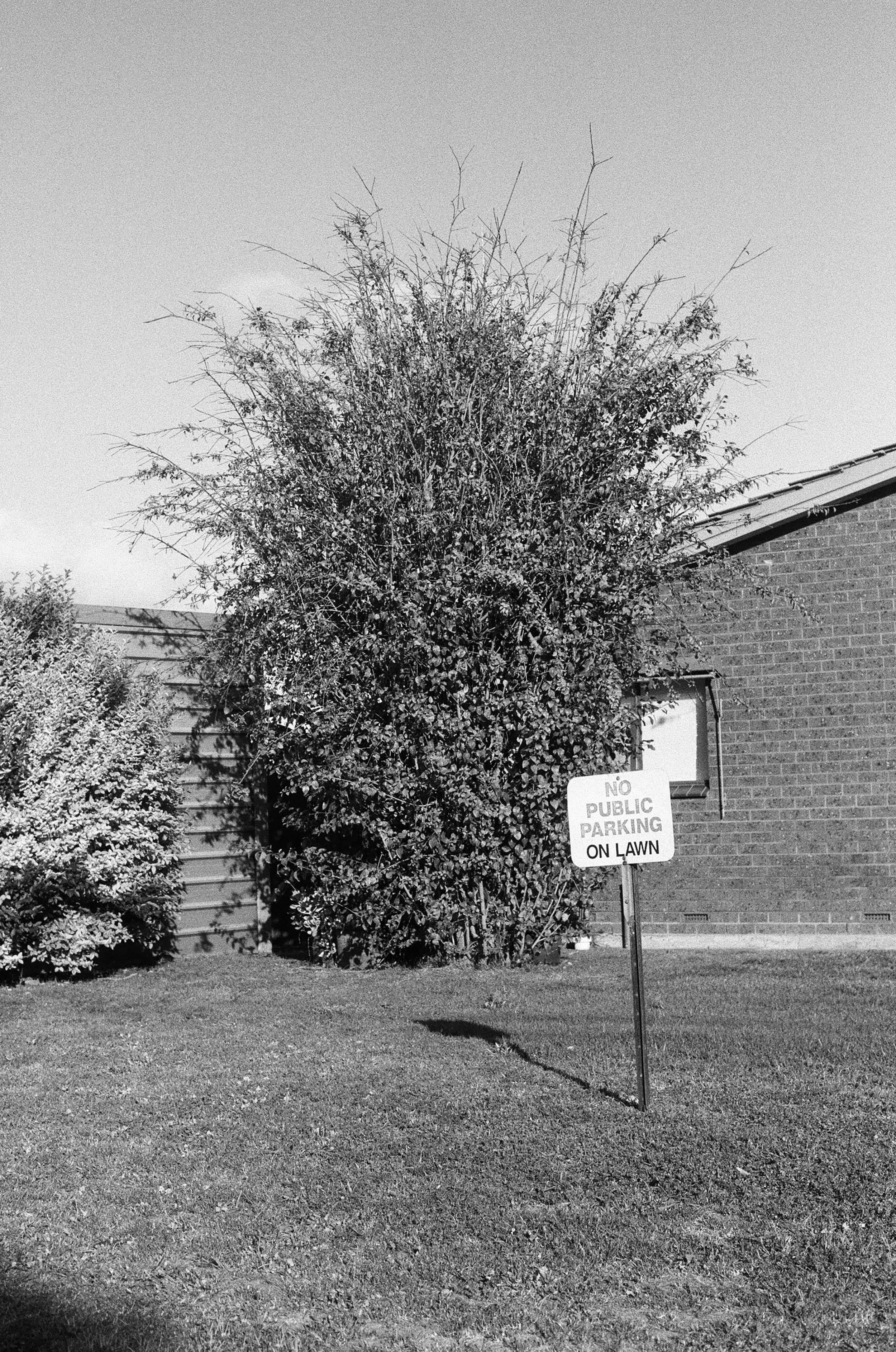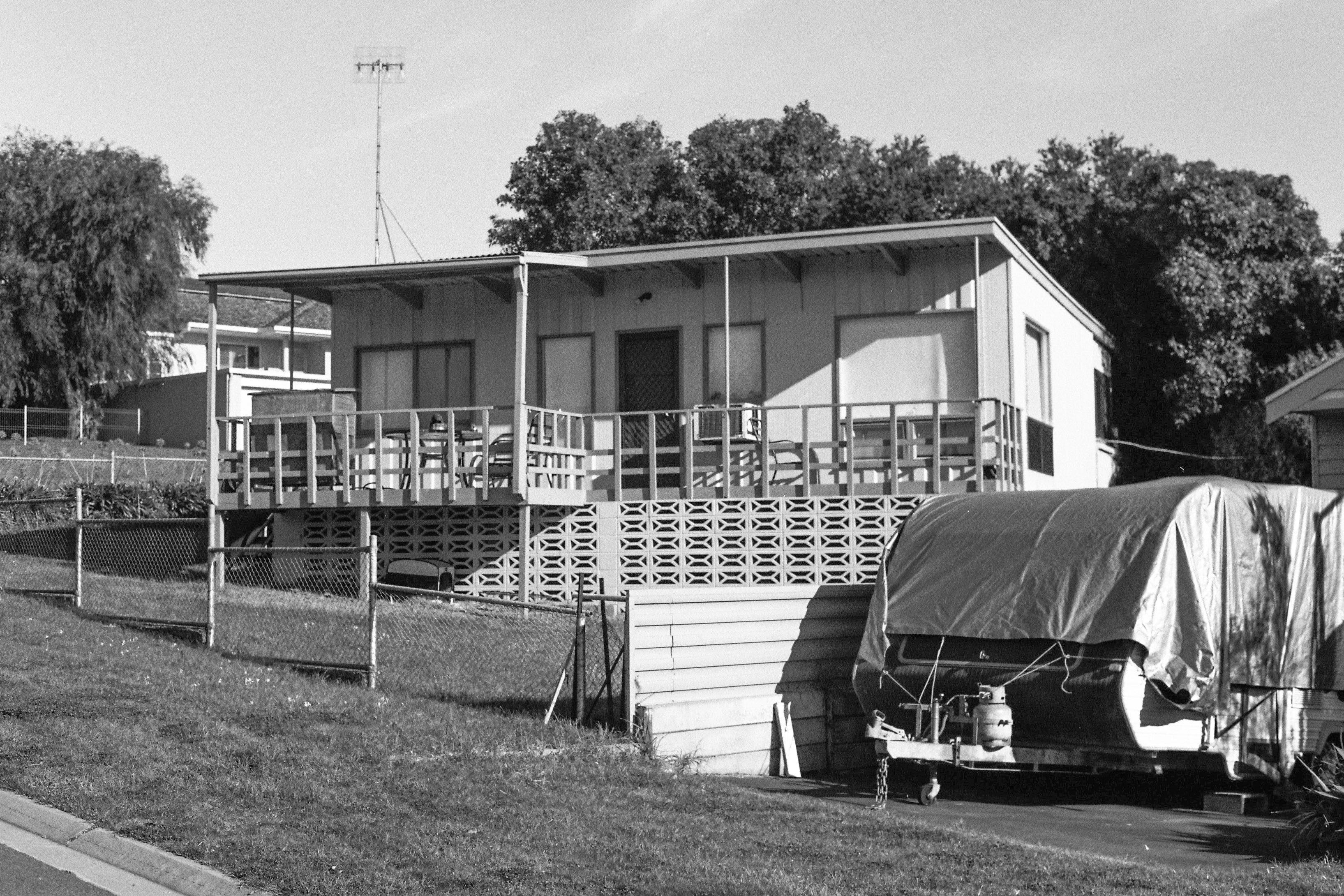![]()
THOMAS LING'S LATEST EXHIBITION, HART AVENUE, INITIALLY EMBARKED ON A VISUAL EXPLORATION OF MID-CENTURY ARCHITECTURE IN A SERENE COASTAL TOWN. HOWEVER, AS LOCKDOWNS REDIRECTED LING TO HIS HOMETOWN FOR AN EXTENDED STAY AFTER A DECADE AWAY, THE PROJECT MORPHED INTO A PERSONAL JOURNEY OF REDISCOVERY AMIDST CHANGE.
Hart Avenue unfolds as a captivating narrative highlighting the under-appreciated beauty of a small coastal town. Ling's lens captures the
subtle dance between the town's sleepy charm and the artist's evolving connection with Encounter Bay, offering viewers an intimate look into the interplay of time and personal values.
On the eve of his exhibition, we caught up with Thomas to explore the question of whether 'home really is where the h̶e̶a̶r̶t̶ Hart is.
Hey Thomas, great to catch up. Are you currently located on Hart Avenue?
No, I’m not at the moment. I grew up just around the corner but I’m currently living in the city, about an hour away, with plans to move permanently back down south next year. Hart Avenue is actually a street that really inspired me in the making of this project. It was an unsealed dirt road in the middle of a suburban area, with grass lining either side and a line of mid-century houses that spilled onto the street. If you didn’t look around it felt like you were taking a step back in time.
Tell us a bit more about yourself and your creative background.
I’ve been photographing for the last 10 years or so. I studied photography in high school and fell in love with it. It started as a hobby when I found one of dad’s old SLR’s to get repaired, by then we were well and truly in the digital revolution. I became fascinated with the strange, tangible nature of film, the whole idea of having to focus on what you were making, then the apprehensive excitement when you got the roll developed. It became a tool to help me document surf trips and travels, and it helped me to explore and understand the places I visited. From there I had mates who started playing in bands, and I delved pretty hard into photographing the music scene, amongst a whole range of other things. Through this I’ve always been really curious about longer form projects and ideas that photography gives voice to, and different ways of presenting work through zines, books, and exhibitions. Outside of working as a photography and design teacher, this is where most of my energy now goes.
Let's dive into your latest project and exhibition, Hart Avenue. Can you please share more details about the project?
Hart Avenue initially started as an exploration of the largely undocumented presence of mid-century architecture in a small coastal town, which then slowly transitioned into a personal study of re-connection to my home town in the presence of change. Lockdowns resulted in a move to my hometown by the coast for 12 months, the first significant amount of time spent there in 10 years. When I moved back, I started going for a walk most nights, always trying to go down a different street to see something new. This body of work is an attempt at creating a tapestry of imagery that honestly documents the many facets of this small, sleepy coastal environment, amidst a newfound respect for the beauty of the location. It is equal parts an examination of my own relationship with Encounter Bay, as it is a meditative canvas for a photographic study.
Where were you residing before this?
We were living in Somerton Park, a coastal suburb of Adelaide. It’s beautiful, sunny, warm, and not too far from fun waves.
How was it returning home after a decade away?
It was a great place to grow up but for a while when I was younger, but did feel like one big retirement village. I reached a point where I was really keen to get out. I’m always back and forth between the coast and the city, but it’s always been pretty transient. Returning home during Covid was strange, initially. Maybe it was the chaos of everything going on, but I found the process of rediscovering the place I’d grown up really rewarding. Perhaps, due to Covid, it was because we had an excuse to be much less busy. But, I found the 12 months back there really calming, like I was seeing the space from a whole new perspective.
It sounds like your personal values shifted during your time in lockdown and working on the project. Can you elaborate on the values you let go of and what came into focus?
I think I had recognised how beautiful Encounter Bay was, and maybe due to maturity, how my perspective had changed. I’d started to notice so many more nuances of the place. I became really interested in the history, and I began to notice the layers of a country town that are central to the culture itself. We’d also purchased a block of land, and had slowly started the process of building our own world down there. This was also during a period of rapid growth in house prices, and I recognised real concern for the people who were residents becoming priced out of the place they called home.
When documenting a small, sleepy town, you must become familiar, and even close, with its inhabitants. Are there any particular characters that stood out to you during your time pulling together your body of work?
I love hanging out by the jetty in the afternoon. The lighting is great, it’s often protected from the wind and the variety of characters fishing is great. There’s one group of fisho’s, who I’ve seen down there heaps before, who I recognised could all do sign language so they could communicate with their one mate who was deaf. It was a real reality check you know, you kind of have assumptions sometimes with crusty old fisho crew, and I was blown away by how core it was that they’d all learnt this so that their deaf friend could be included.
That's so awesome and inspiring. I love that sense of community. How did these individuals influence or contribute to your project?
I think it really helped to reiterate the idea that beneath any Australian regional area, suburb, or town, it is the people that are at the centre of the culture. The characters are what makes a place interesting. I guess I also felt that, amongst so much change, I wanted to make sure I’d documented what this culture looked like as it continues to work through a process of gentrification.
What's the strangest thing you've encountered in Encounter Bay?
It’s not so much something I’ve encountered, but it’s more the fact that after seeing the place change over the last 15 years it is still so seasonal. Summers are crazy, for example, people having to park their boat trailers 2km’s down the road from the boat ramp because there’s no parks. Whereas in winter, you can surf by yourself or go out for a meal with only a couple of other tables occupied. This is slowly changing, maybe we shouldn’t tell too many people.
I noticed you shoot mostly in black and white. Could you share the reasons behind this choice? What's your go-to camera set-up / film stock?
I mostly shoot with a Contax G2 using Kodak Tri-X 400 film stock. I’m not a super tech guy, when I find something that works I like to stick to it. I am somewhat of a traditionalist with my photography, and I’ve always been inspired by early American photographers like Garry Winograd and Lee Friedlander as well as more contemporary photographers like Ed Templeton and the whole Magnum team. I’ve also been inspired by early black and white surf photography by legends like John Witzig, as well as music photography from the punk scene. The more I shoot B&W, the more I see the world in shapes and shadows, I love that it strips away the distraction of colour.
What else do you point your lens at?
I shoot a number of events and weddings throughout the year, as well as some studio work. I’m not doing it as much anymore, but I still shoot some gigs throughout the year, and I always get such a buzz! Outside of this I have a few loose documentary projects on the go.
Hart Avenue is exhibiting at the Royal Adelaide Hospital. How did this come about, and can you please tell us more about the Creative Health program?
The Creative Health program run by the Hospital Research Foundation Group aims to improve the quality and experience of healthcare through art and design. I actually studied Health Science, and work as a high school Wellbeing Coordinator alongside my role as a design and photography teacher. When I saw the program, I put my hand up immediately. I understand how challenging the health system can be to navigate, and how sterile this environment can be, especially for patients experiencing long term stints in hospital. This was a really great opportunity for my artistic and professional work to co-exist.
What are you working on next?
Once Hart Avenue wraps up at the Royal Adelaide Hospital, I’m keen to bring it down to the coast and have a second iteration of the exhibition show where it’s more accessible to the people who inspired the work. That’s on the cards at the moment, maybe even a zine to accompany the exhibition. I’ve also got years of work documenting the surf scene of the West Coast of SA, which I’d love to bring to fruition eventually. This is an ongoing project with no end in sight.
Where's the best place to grab a beer in Encounter Bay?
Beach House Café for sure. Ask Ray for a Bluff Beer.
Hart Avenue opens at the Royal Adelaide Hospital (Gallery E & F) this Friday the 8th of December. Check out more of Thomas' work, here and give him a follow on IG: @_brotherfish.









